In this article we will discuss the rationale of
neck knives, where they fit into the personal security package, how to train for greatest effect, and some of the types available, based on what I have in my collection.
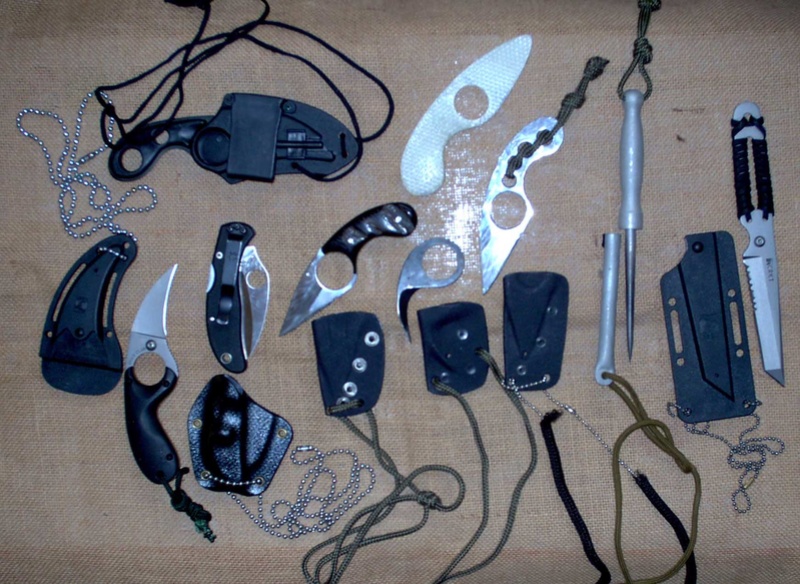
I first became interested in neck knives after reading an article by Bob Kasper in the 1998
Combat Knives Annual. Bob pointed out that neck knives seemed to be the coming trend in combative cutlery, and discussed the advantages and disadvantages of the type. The knives Bob discussed, from makers such as Knealy, Polkowski and Crawford certainly seemed to be little gems, and I decided to get hold of one sometime, and start working with it.
A few weeks later I was in South Africa presenting some training, and, as usual, wandered into Springbok Arms, the local gunshop. Browsing the knife cabinet I noticed a new arrival from the Columbia River Knife & Tool Company [CRKT]. This was the
Stiff Kiss, an Ed Halligan design, made under licence by CRKT, and on sale for about £20. This was good news, because most of the neck knives I’d been considering were quite pricey. CRKT did us all a favour with this, and several subsequent designs.
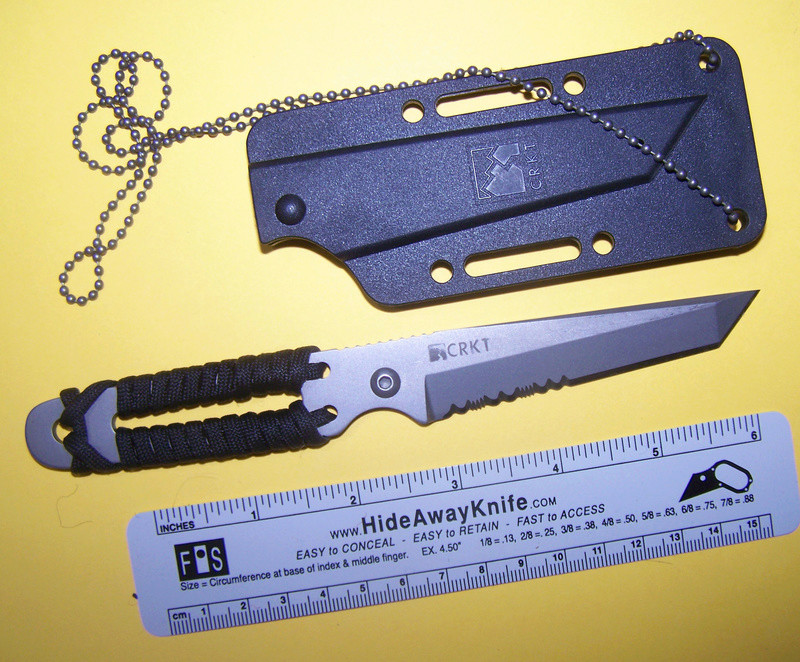
Les Van Blerk, who was working in the gunshop at the time very professionally wrapped the handle with paracord while I waited. Les was very clued up about edged weapons, and I invited him to be a guest lecturer on our Knife Program over there.
The Stiff Kiss was, in fact, a whole system, with numerous ways of attaching the sheath to webbing, inside pocket, on the belt etc. CRKT reckon there was over a dozen ways of carrying the device.
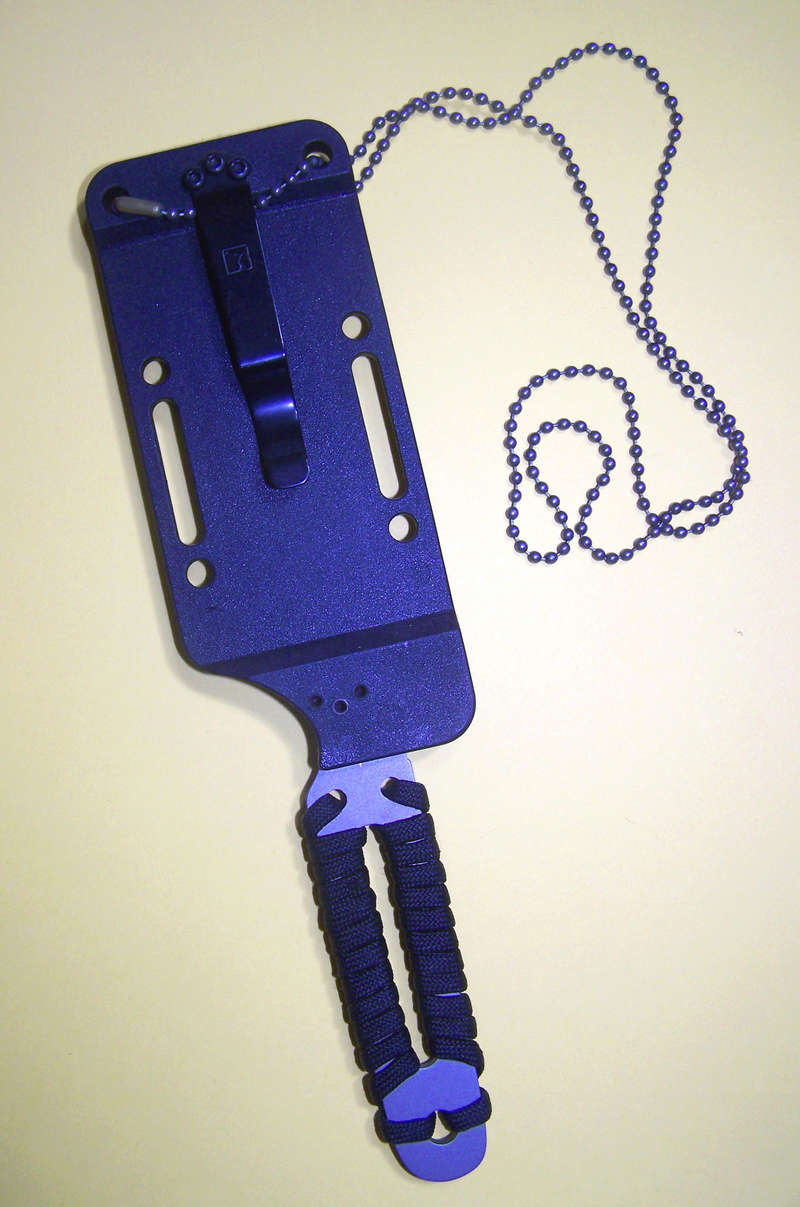
I started playing round with this knife, and gained some insights into what neck knives are all about.
LEVELS OF ACCESSIf we consider protective weapons from the point of accessibility, we have a three-level approach.
The primary weapon should be quick to access, with the master hand, and some consideration should be given to presenting it with the support-side hand too.
The backup weapon should be virtually as fast as the primary, but carried on the opposite side, to be accessed if pinned down on the master side, or if that limb is restrained.
Finally, the hideout weapon, is a deep reserve, to be used if disarmed of the other weapons. Access is slow, because concealment is the main attribute.
The neck knife is in the category of a hideout weapon.
CRKT next offered their
Bear Claw, designed by Alaskan Russ Kommer, as a self protection blade for women. Again, a very reasonably priced unit. At the time I was very much into using the Spyderco Civilian, and liked the idea of a curved-blade neck knife.
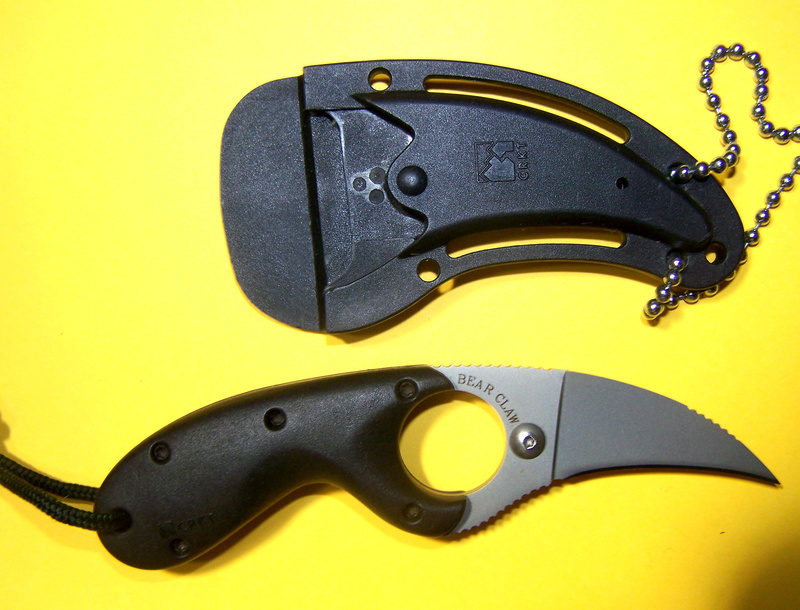
Like the Stiff Kiss the Bear Claw had numerous attachment and carriage options.
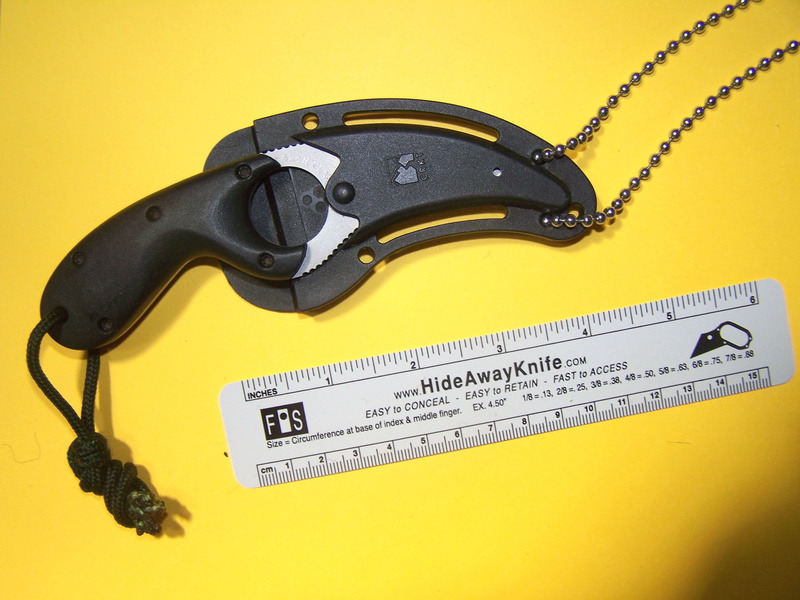
Several years later I was able to acquire a couple of Fred Perrin’s La Griffe designs, which share the basic outline of the Bear Claw, but have separate design histories. Fred’s work is top notch, with utility and artistry combined.
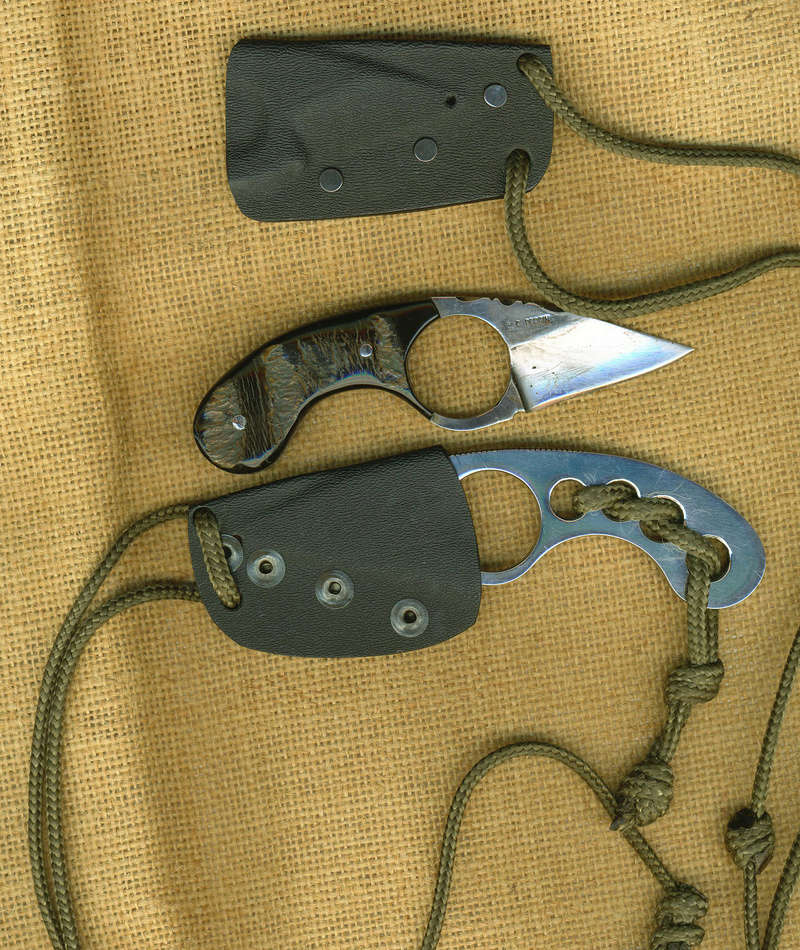 SUSPENSION SYSTEMS
SUSPENSION SYSTEMSYou will notice that the Perrin knives above have a paracord suspension system, while the previous knives had chain. This is a good point to discuss the options.
Paracord is very comfortable around the neck, but, with a breaking strain of 550 lbs can act as a garrotte against you in a fight. Chain is more discreet, in as much as it is commonly seen around the neck. Plus it will break under sustained pulling, and won’t choke the wearer.
Some makers have offered a paracord outer shell, with cord within, to provide the best of both worlds.
HAKs It’s no secret that I’m a fan of the Hideaway knives. Among the many concealment options are neck carry.
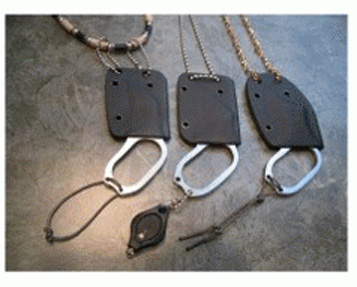
A neat bit of “urban camouflage” is the gold chain, which blends in very well, especially for the female user...
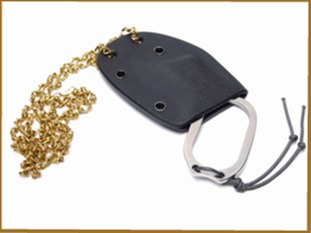 TACTICAL FOLDERS AS NECK KNIVES
TACTICAL FOLDERS AS NECK KNIVESSo far we’ve looked at compact fixed blades, but there are sheaths designed for the carriage of a folder as a neck knife.
Some designs allow the folder to be carried locked open, as this Fred Perrin package illustrates...
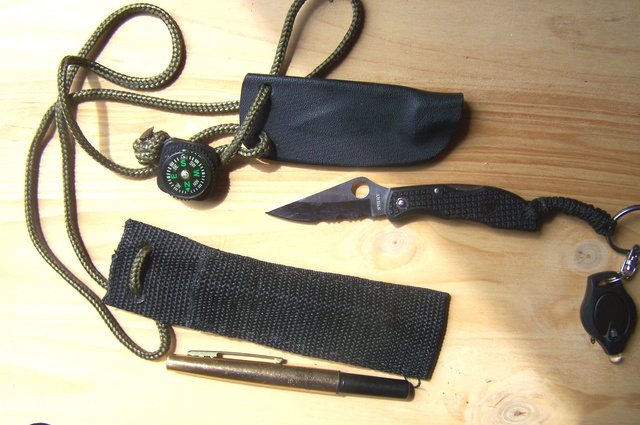
Generally, however, the folder is carried closed, and has to be opened after being released during the draw-stroke. My favourite such sheath is the
River City Concealex scabbard, for my Spyderco
Harpy. Mike Sastre of River City is a keen white-water boater, who realised that the Harpy is ideal for such application, because it was designed for an aquatic environment, and the offline point is less likely to puncture buoyancy aids, inflatable’s etc, while being specifically designed to cut rope, weeds etc. In the tumult of white-water rapids shooting, the standard belt clip may not provide sufficient security, so Mike designed a range of sheaths to encase the knife until needed. These can be secured via grommets, to the life-vest, backpack etc, or, used as a neck-knife.
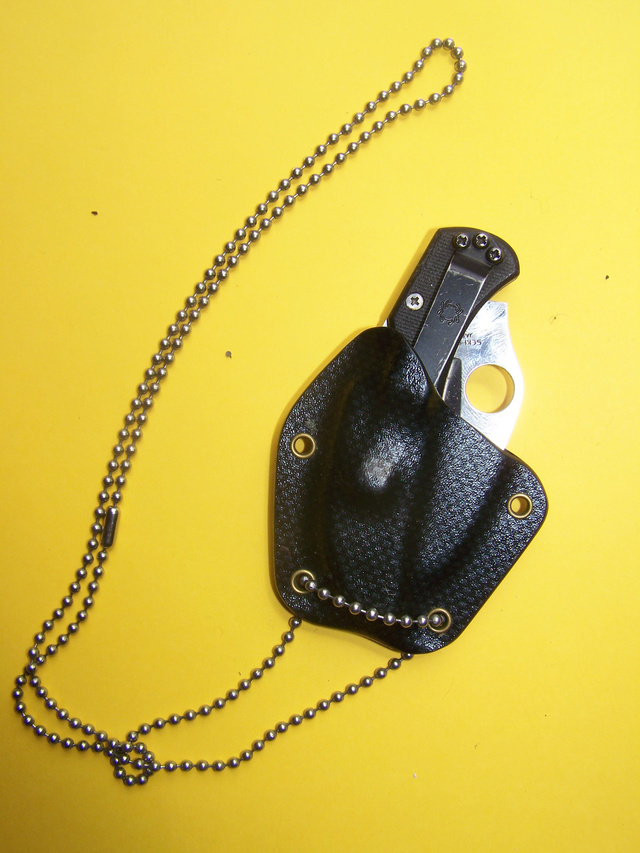
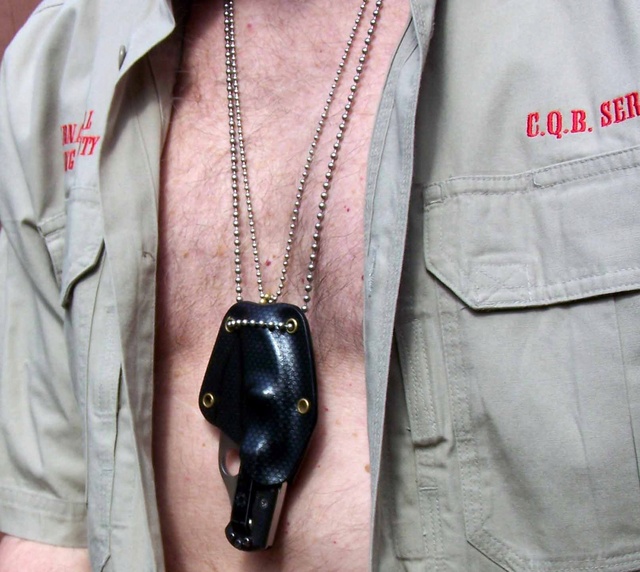 ACCESS TECHNIQUE CONSIDERATIONS
ACCESS TECHNIQUE CONSIDERATIONSAlthough the neck chain is a good method of concealing the knife, it does present a couple of problems.
Firstly, because the weapon is hidden beneath one, or, more layers of clothing, access requires first clearing these garments.
Secondly, the sheath, being suspended, has a pendulum effect, moving beneath the clothing. Smooth access of a weapon is dependent on consistency, you have to be sure the weapon is where it should be, and, with the neck chain, that’s not always the case.
Finally, the sheath can twist, so that you end up grabbing the knife incorrectly. Not so bad with a double-edged weapon, but potentially disastrous with a single edge.
The technique I teach for access of the neck knife is a three-step process, designed to give a fundamental skill. Larry demonstrates the sequence...

1] As the support hand grabs the hem of the covering garment and raises it high, to chin level...
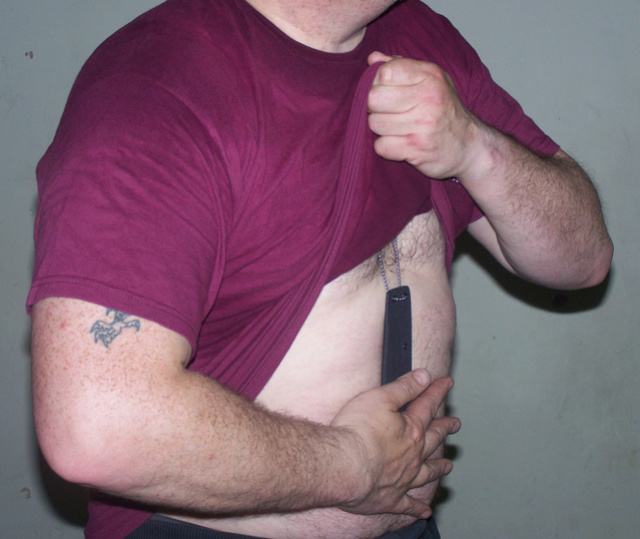
the master hand reaches for the sheath and slaps the knife to your chest...

2] Raising the support-side elbow to form a shield, while stepping forward, and leaning the upper body aggressively forward....
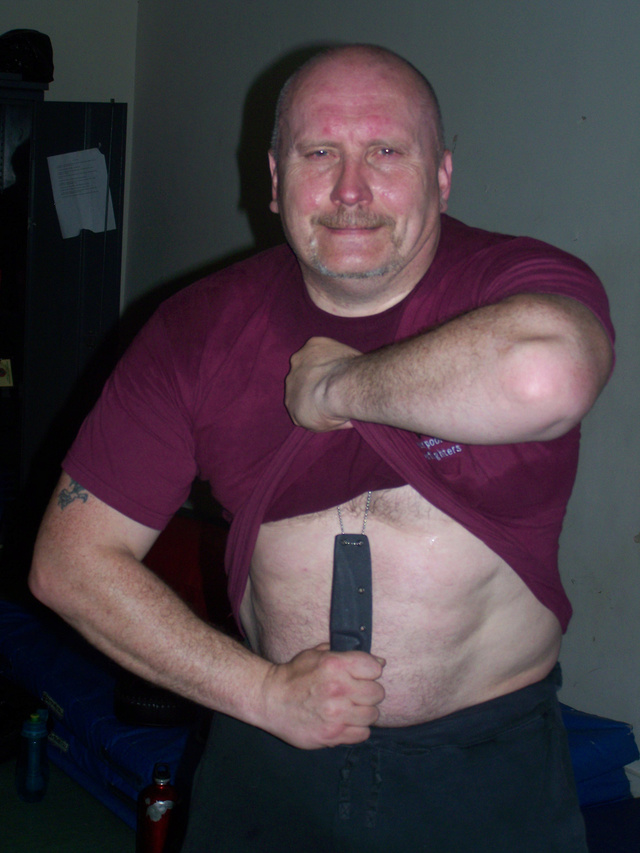
at the same time the master hand releases pressure to allow the sheath to swing away from the chest, which permits the hand to achieve a secure grip...

3] Use a sharp tug to withdraw the knife, then move to the high retention position, ready to strike.

....….note how there forward lean provides clearance to attain a full grip…
This method gives the basis of a training system, which must then be widened to cover, access in unorthodox/disadvantaged positions, single hand access etc.
Speed. In my view the neck knife will never provide a “quick draw.” Access is both slower, and more co-ordination intensive than with, for example a Push dagger in a belt sheath. We have had guys turn up with neck knives on our Edged Weapons courses. Sometimes it becomes apparent that they haven’t invested the requisite repetitons to employ the weapon with any degree of confidence. And even those who have done the work often fluff the draw in stress tests.
For this reason I personally find the neck knife impractical for self protection, and, after working with the various types discussed in training, the only one I have ever carried for real was the Harpy/River City package, which I found especially useful in a particular time and place.
ALTERNATIVESSouthNarc designed the Li’l Loco, as a highline option, without it being a neck knife....
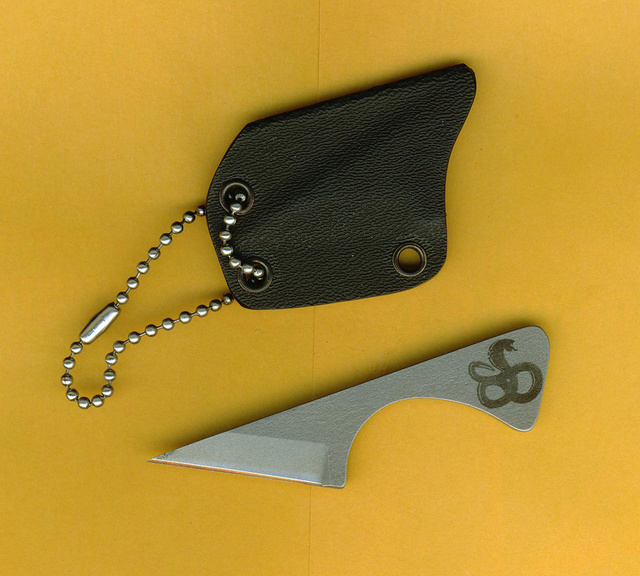
..... designed to be attached to a shirt button at centre chest, it provides a weapon to be utilised if access to the waistband is restricted in a pinned-down situation.
Bob Kasper has pointed out that neck knives can be hung in convenient locations, behind the front door, from the vehicle steering column, etc. Also, some models can be employed in the “rip cord” draw system.
Recently, Mika presented me with this beautiful Polkowski neck knife while I was over in Stockholm with Marcus....
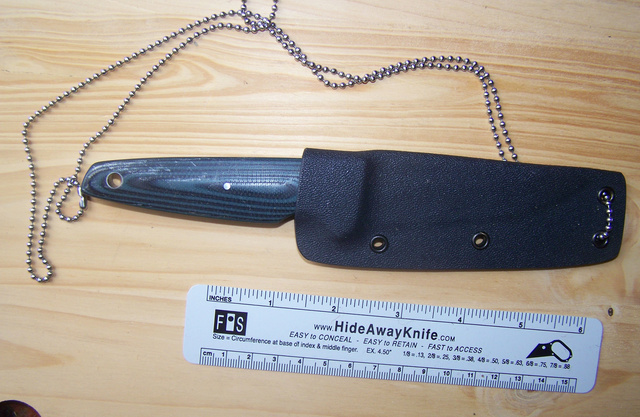
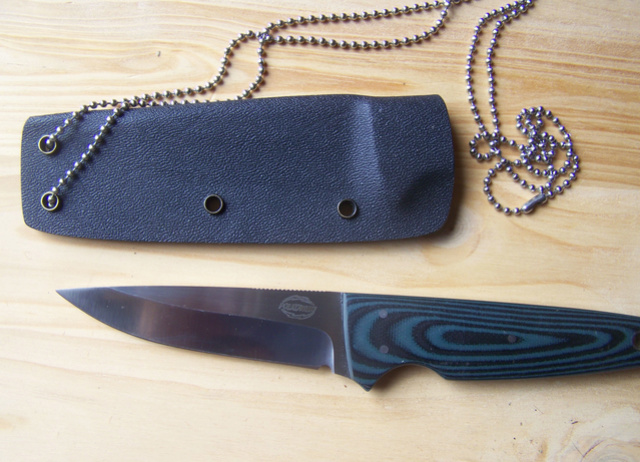
I really like this design, and am considering having a boot sheath made for it.
So there you have some thoughts on the neck knife. Although widely popular does it really fit your needs? If so, you really need to train very specifically with this weapon, especially concentrating on access under stress, using appropriate safe training equipment, with an aggressive partner. So, even though I don’t find they fit my needs, they may be just the thing for you.
.
